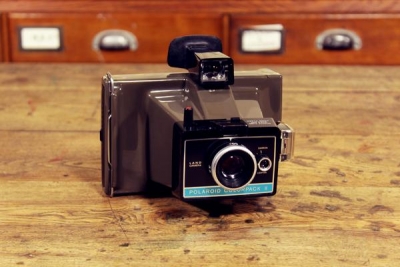
In 1944, a child’s disappointment having to wait several days to see the photograph her father had taken led him to devise a quick method of film processing.
He was an American, Dr Edwin Land of Cambridge, Massachusetts, and in just a few months he had come up with a solution. Within three years the first instant-picture camera came on the market, capable of producing a finished black-and-white picture in about a minute. He called it the Polaroid-Land camera.
Today, a Polaroid camera can produce a black and white print in as little as ten seconds and a colour print in only a minute. The secret behind instant photography lies in the film, not in the camera. The film not only has a coating of light sensitive emulsion like a normal photographic film, but also carries the chemicals necessary to process it.
The film pack has both negative and positive sections – in a colour film each is many-layered, with dye developer layers alongside was colour-sensitive negative layer. The processing chemicals that trigger off the developing and printing process are in jelly-like form in a tiny plastic pod between the negative and positive sections.
The pod bursts when the film is removed from the camera through a pair of rollers. The chemicals are spread evenly over the film, and diffuse through it to set the picture processing in motion. The sandwich of film and print material develops in daylight outside the camera, and a positive picture is revealed when the negative and positive layers are pulled apart.
Picture Credit : Google

